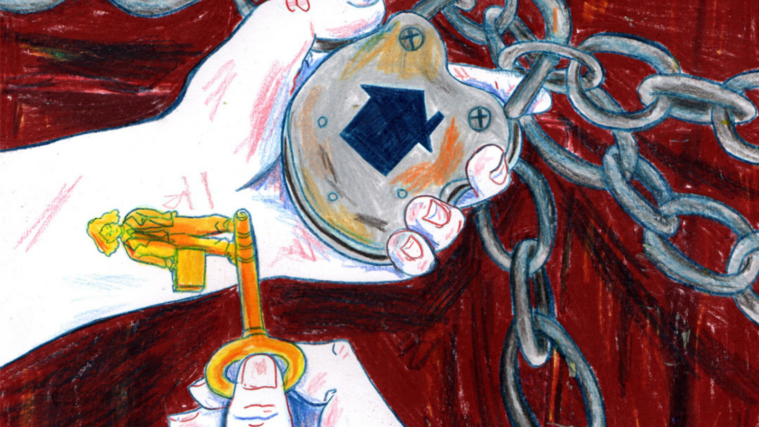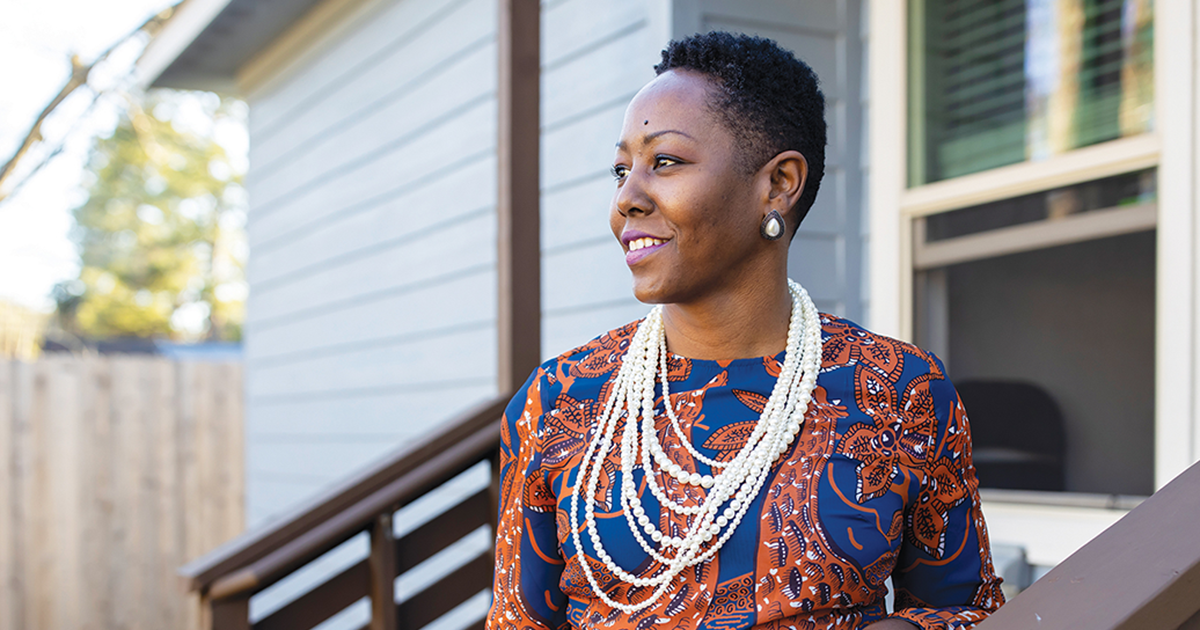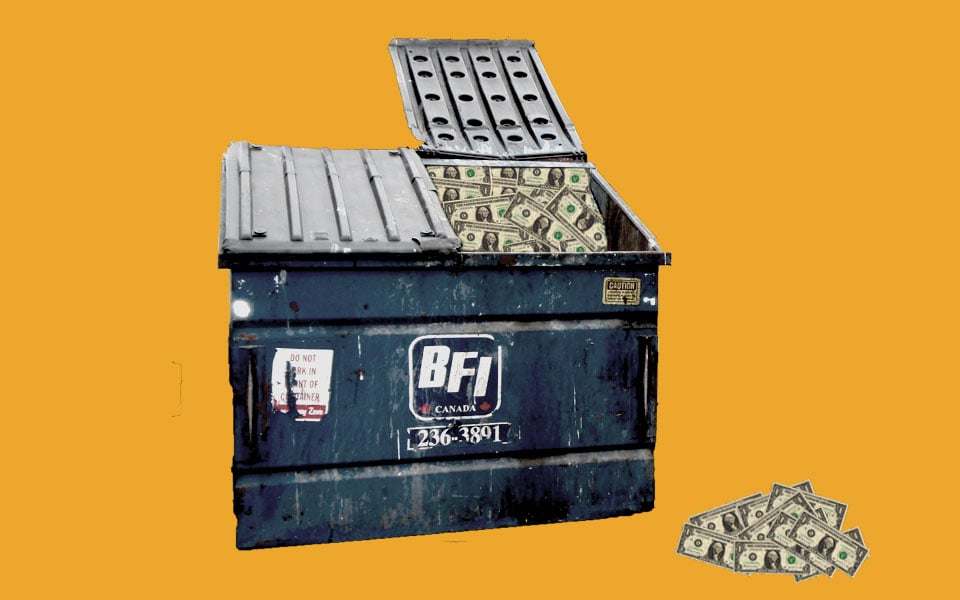Spinning Their Wheels
Dallas’ paltry public transit system makes owning a car all but required. So as the metroplex booms, many low-income residents are shut out of jobs and services they need.
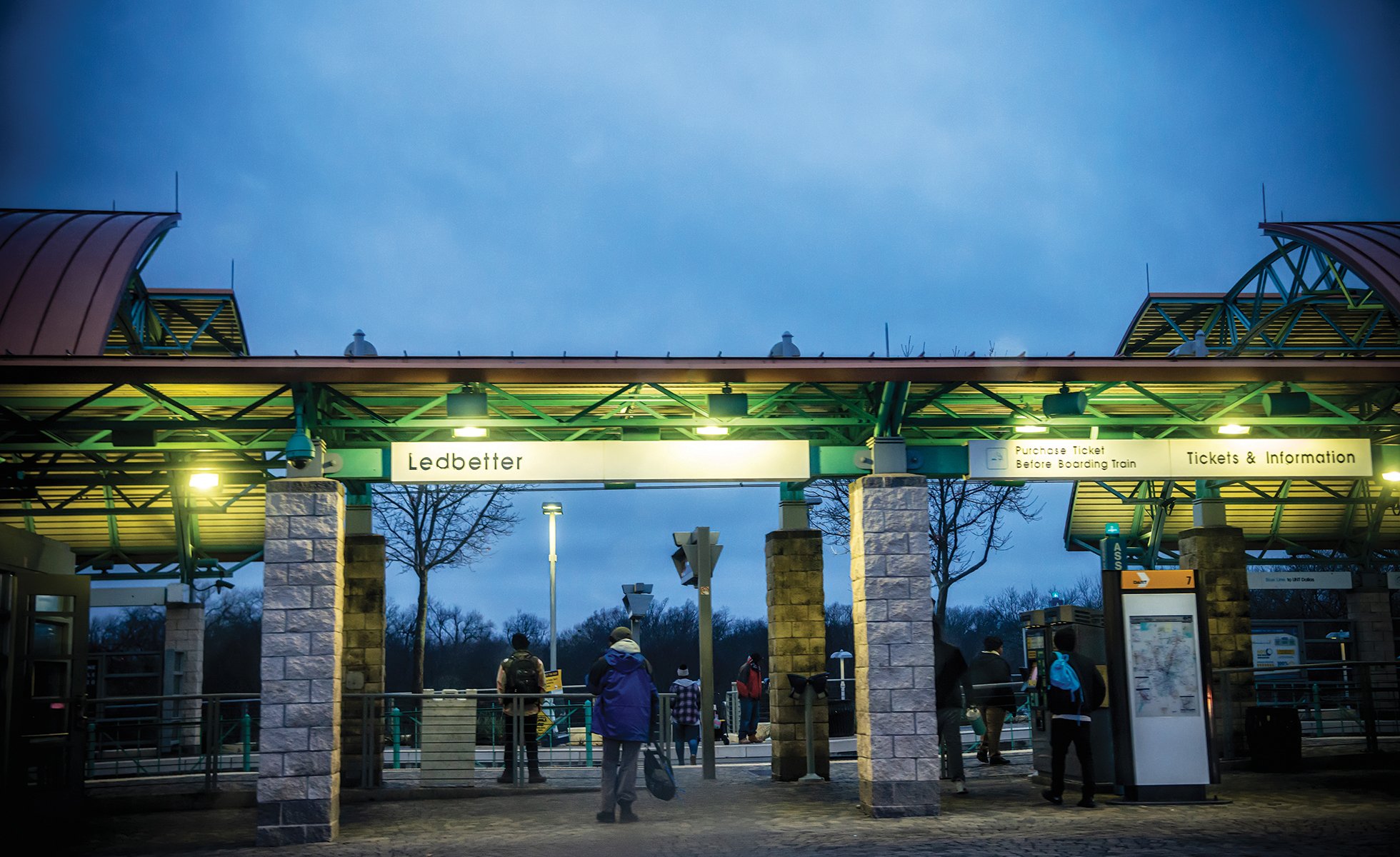
By Mark Dent
April 20, 2020
On a rainy Wednesday morning in January, Keidreana Sims and Kristin Johnson are headed to their first day of work at Sterilite, a plastics factory about 30 miles south of Dallas in Ennis. The sisters are excited: The warehouse job pays $13 an hour, with a potential raise to $14 after a few weeks of good attendance. They check their phones every few minutes, nervous about being on time for the 7 a.m. orientation.
“I like warehouse jobs,” Johnson says. “And warehouse jobs are far out.”
Neither Johnson, 22, nor Sims, 20, has a car—they can’t afford one. So before they could start at Sterilite, they had to figure out if they could even get there.
Just finding the job presented logistical hurdles. To get to a staffing agency in the suburb of DeSoto, Johnson and Sims walked from the home they share with their mother in Fair Park to a nearby rail station and took the train to the University of North Texas Dallas stop in far southern Dallas, just north of Interstate 20. There, they waited on a bus that comes by once an hour, and only during morning and afternoon rush hours. Although their neighborhood is about two miles from downtown—tucked between interstates 30 and 45—a trip that would have taken 25 minutes by car was nearly two hours by transit.
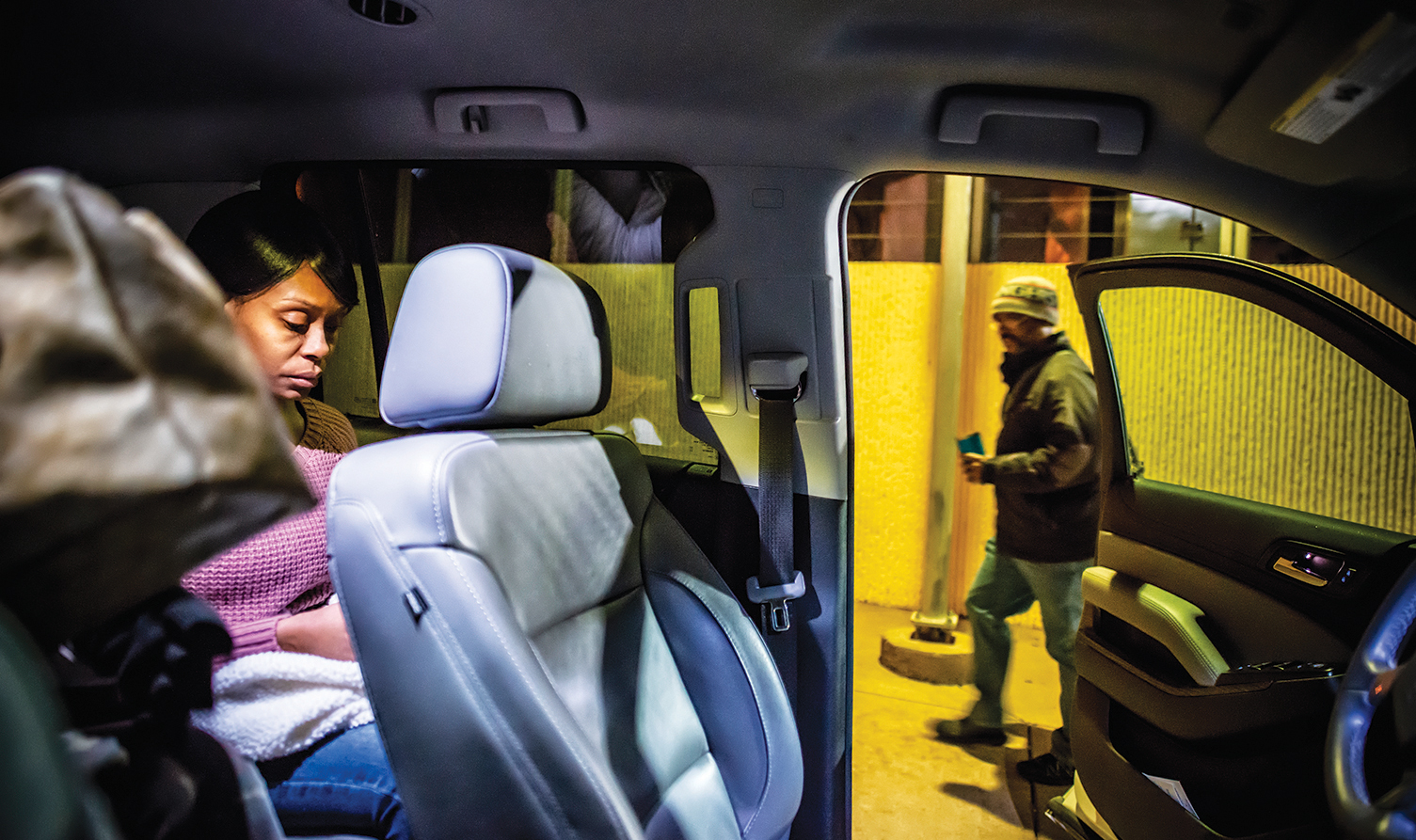
The Dallas-Fort Worth metro area, which added more than 100,000 jobs in 2019, leads the nation in job growth and has boomed with new residents and amenities. But some neighborhoods—particularly south side communities like Fair Park, where 1 in 3 households is below the poverty line—have been cut off from that development. Dallas’ paltry public transit system makes it difficult to reach northern and southern suburbs, where new jobs and services have clustered, without a car. Even as their city grows around them, low- and middle-income residents are effectively shut out.
In January, a study from the nonprofit Citizens Budget Commission found that the average household in Dallas-Fort Worth spends $1,365 on housing each month and nearly as much, $1,165, on transportation. That makes it only slightly more affordable than New York City when both expenses are considered.
A study by the data analytics company Inrix found that it costs $10,841 a year to own and operate a vehicle in Dallas. Unlimited rides on Dallas Area Rapid Transit (DART) bus and rail lines come in at a fraction of the cost: $1,152 annually. But unlike in New York City, San Francisco, and other cities where residents can ditch their cars for public transit, Dallas’ public transportation isn’t a reliable option.
In 2017, Shima Hamidi, then a professor at the University of Texas at Arlington, defined some populations as “transit-dependent,” referring to people who lack dependable access to cars and rely on public transit, walking, and other forms of transportation. She found that areas in Dallas-Fort Worth with high concentrations of low-income people, minorities, and zero-car households are part of a transit-dependent core. Although the suburb of Arlington and a pocket of northern Dallas that stretches into Garland were designated as transit-dependent, by far the largest affected area in Hamidi’s study was southern Dallas, a broad swath of the city that reaches from I-30 south of downtown all the way to the city limits. Half a million people live there.
Hamidi found that one-third of Dallas’ transit-dependent residents did not live within a quarter-mile of a bus stop or a half-mile of a rail station, a common threshold for access. And people in the city’s transit-dependent areas had access to less than 4 percent of jobs within a 45-minute commute time using DART. “It’s a transit system that is not built to help these people,” Hamidi says.
This inability to get somewhere quick—or get there, period—is more than an inconvenience. It can be the difference between a high-wage job and a low-wage job—or a low-wage job and nothing at all. A 2015 Harvard study revealed commute times to be the strongest predictor of a person’s odds of escaping poverty: The longer the average commute in a given area, the harder it is for families to move up the economic ladder.
And the lack of public transit in the Dallas area makes car ownership all but a requirement, so that households spend “a substantially higher percentage of their income—even more than housing sometimes—on transportation,” Hamidi says. “It means the other important items on household budgets, like for food and for health care, they have to cut from those.”
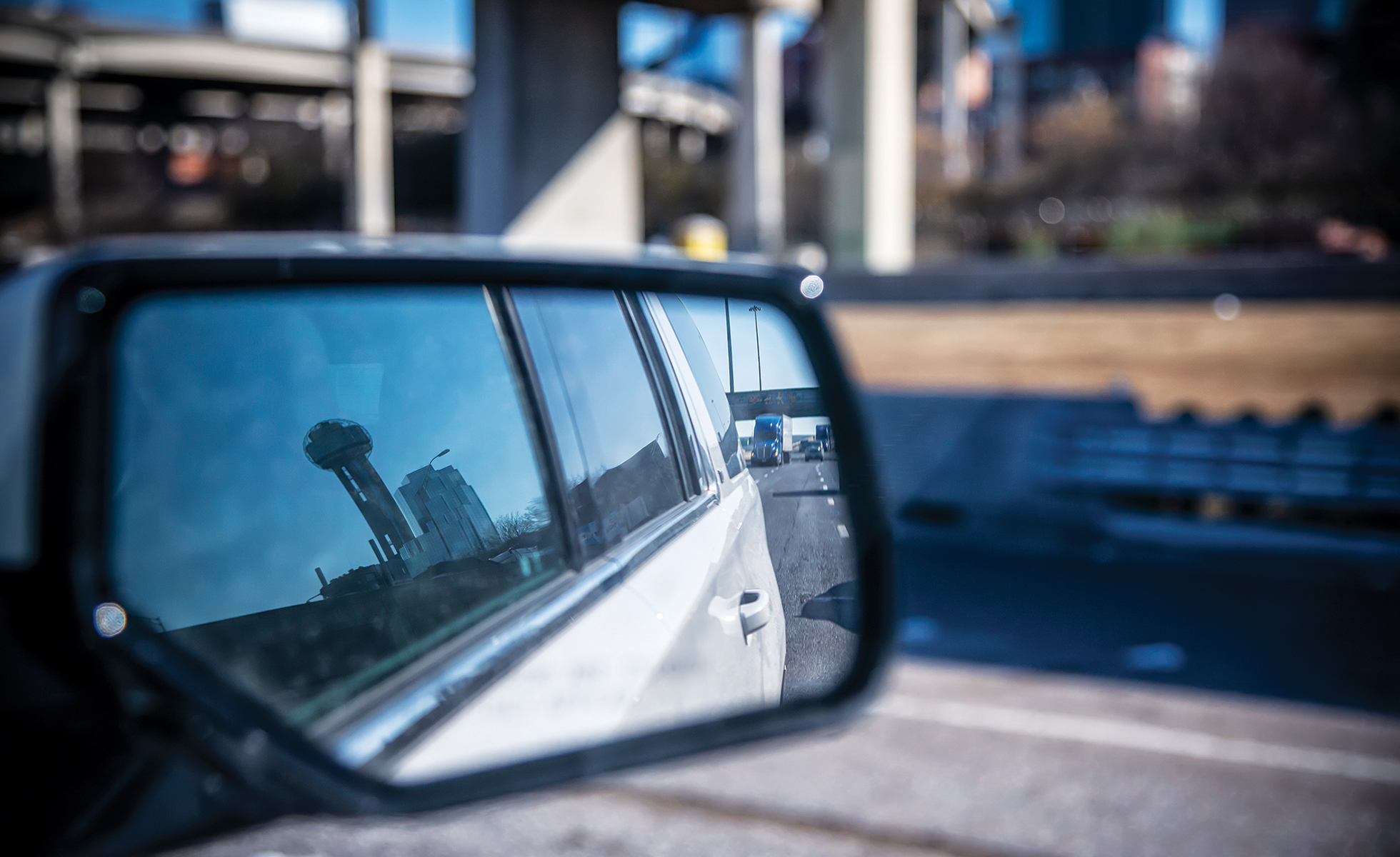
DART faces a formidable task: connecting the Dallas-Fort Worth metroplex, which consists of 7.5 million people spread across more than 200 cities and towns over some 9,000 square miles, with transit. While the agency manages a fleet of more than 600 buses that service more than 11,000 stops, critics contend DART has focused too much of its funding and attention on its 93-mile rail line. Sandy Greyson, who previously served on both the DART board and city council, describes the agency as being “fixated on rail and rail expansion.”
Patrick Kennedy, an urban planner and a member of DART’s board since 2016, says the agency mostly built its rail routes along old freight lines that were convenient to buy but not strategically located. Many of the 64 stations are in sparsely populated areas, and routes are designed to funnel people into downtown, which is growing in population—particularly with college-educated residents—but increasingly not where jobs are.
Bus service has not kept pace with Dallas’ needs. Transit-dependent residents must often take two to three transfers to reach their destination, and infrequent service during midday and late-night hours, when many shift workers must commute, means a missed bus can lead to major complications. Dominique Torres, an attorney and DART board member, is well aware of the challenges. She lives in Pleasant Grove in southeastern Dallas and often rides the 111 bus to work downtown. But she says the bus runs only every 30 minutes; on weekends, it’s every hour. “I’m lucky because I have a flexible schedule,” she says. “You have people who aren’t able to get jobs, and if they [can] it takes them a long time to get there.”
DART is further constrained by the many municipalities that don’t participate in public transit. The 13 cities currently serviced by DART fund it through a 1-cent sales tax. But thriving suburbs like McKinney, Frisco, Allen, and Arlington don’t have DART. Instead, they are dedicating tax revenue to incentivize companies to move in and create jobs that many workers who rely on public transit will inadvertently be excluded from. “That’s kind of a messed-up situation,” Kennedy says.
In spring of 2017, Hamidi presented her findings on transit-dependent populations to the Dallas City Council. She warned that the city’s middle class would bottom out if workers weren’t better able to access jobs. In response, then-council member Mark Clayton questioned how Dallas could continue funding DART—it receives some $300 million annually in sales taxes—without making drastic changes. “We have got to start taking seriously our appointees,” said Clayton, referring to the seven people city council picks for DART’s 15-member board. “And if they can’t fix this then they’ve failed, and we shouldn’t have them on there.”
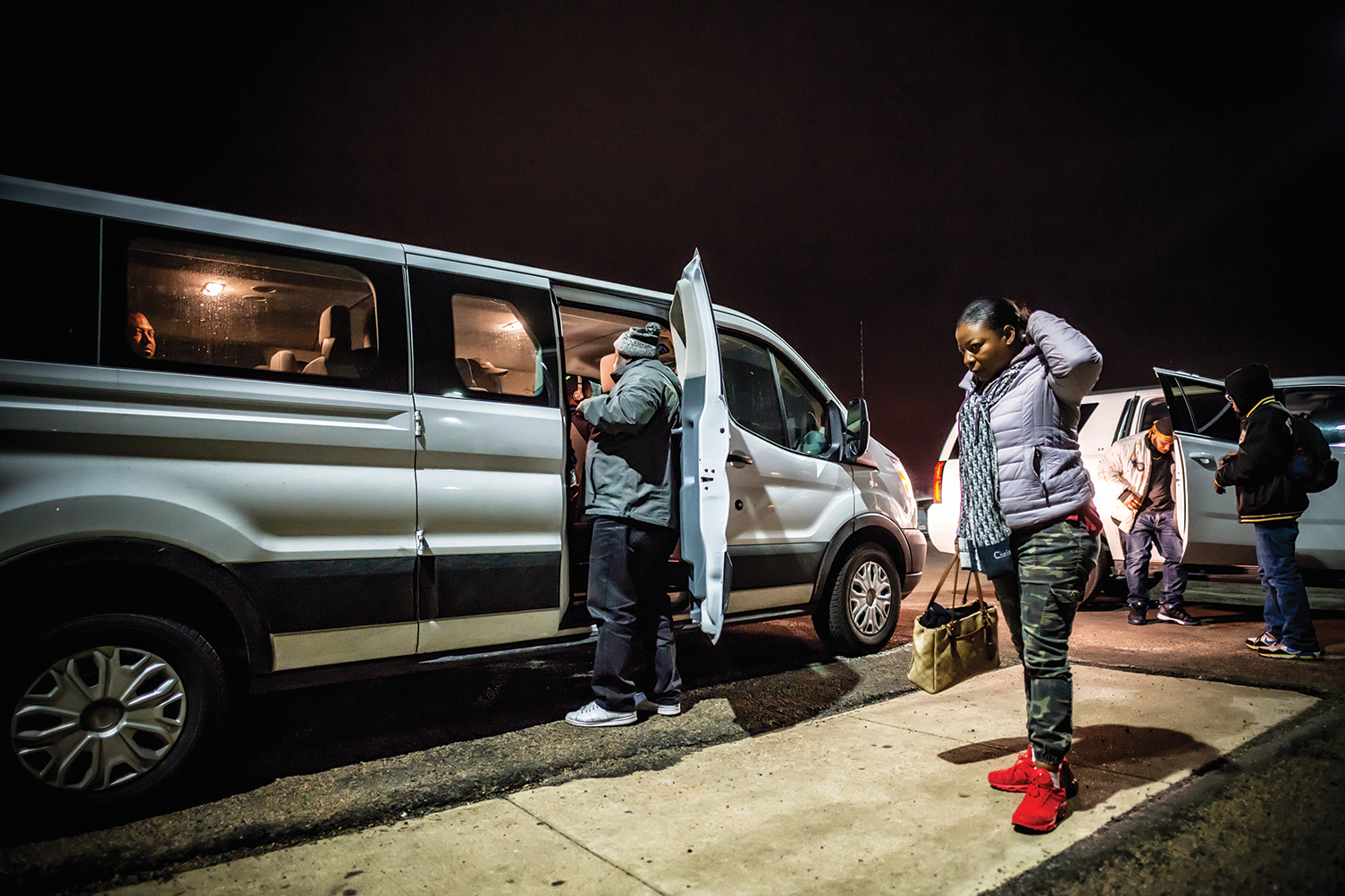
Within three months, the city council had replaced four of those seven members. In October, the city hired its first transportation director, Michael Rogers, who moved to Dallas from Raleigh, North Carolina, where he helped build a rapid transit system that allowed buses to bypass traffic.
Rogers says the city did not think strategically about economic development—namely, how to use housing and transportation policies to ensure everyone could benefit from Dallas’ growth. “I think we’ve been happy to let development happen, but the city has to take a better and more active role in ensuring [new developments] are where we want them to go,” he says.
Gordon Shattles, a DART spokesperson, said Hamidi’s research was “one of the reasons” DART has, since 2017, added or expanded several services geared toward bringing riders the last mile—from the end of a rail or bus line to their home or place of employment—including the on-demand shuttle service GoLink and a carpooling service called GoPool. In 2019, DART hired transportation consultant Jarrett Walker to design a new comprehensive bus plan. After Walker overhauled Houston’s bus system in 2015 to cut down the number of routes and stops in favor of buses that pass more frequently and finish routes faster, monthly ridership increased by 3.3 percent in the first 10 months and remained steady.
But DART’s focus remains on rail, which largely does not take transit-dependent residents where they need to go. In 2019, the agency broke ground on the Cotton Belt, a long-discussed $1.1 billion rail line that would connect the northern, wealthier suburbs to the airport. A unanimous vote to move forward with the project happened in 2018, a year after the massive turnover of DART’s Dallas board members, who had been replaced in part because of their support of the Cotton Belt line. In January, DART announced plans for a $1.3 billion subway line. It will serve only downtown.

In the summer of 2015, Curtis Corbins was looking for a new job. Since he’d dropped out of UT-Arlington decades earlier, he had started a nonprofit to serve at-risk youth, run a long-distance trucking company, and sold real estate. When he went to visit Edna Pemberton, a community activist in Oak Cliff, he told her he wanted to get back to serving his community. While he was there, he says, then-Dallas Mayor Mike Rawlings called Pemberton and mentioned that the Inland Port, an industrial area in far southern Dallas, was beginning to take off but workers were not able to reach the area by transit. “[Pemberton] told me what the problem was,” Corbins says, “and told me to go solve it.”
Corbins, now 55, borrowed a friend’s SUV and piled in as many people he could. He took workers from the Ledbetter Station in southern Dallas to the Inland Port, which employs thousands of people in logistics and warehouse positions, and to the Texas Workforce Commission, which assists people looking for jobs and seeking unemployment benefits. Now his nonprofit, Southern Dallas Link, employs six drivers and operates seven vehicles that take people from DART stations to their jobs.
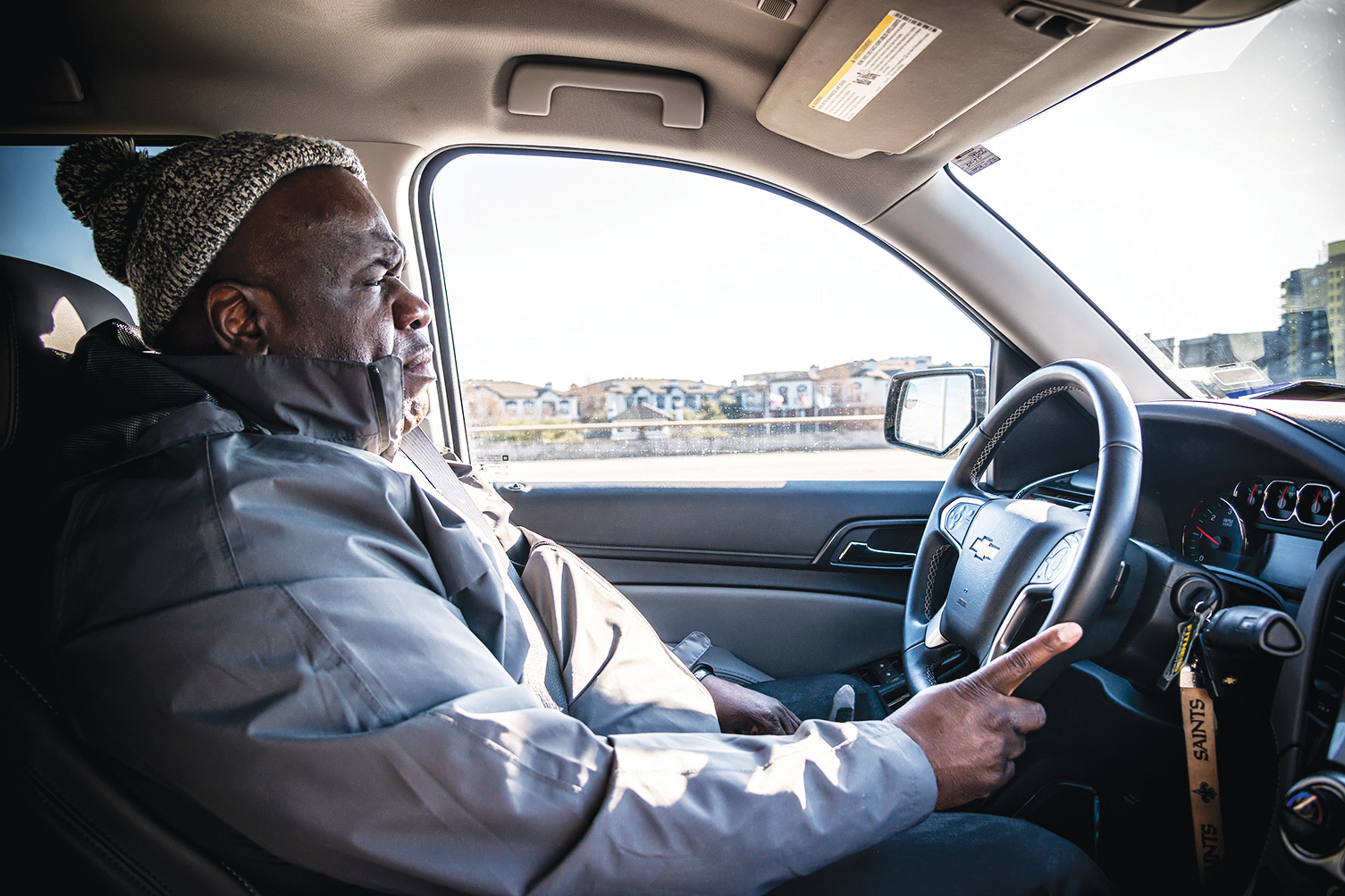
It was a Southern Dallas Link SUV, driven by Corbins’ friend Frank O’Neal, that got Sims and Johnson to Sterilite for their orientation in January. The service is not cheap: Employees at Sterilite, who work three to four 12-hour shifts per week, pay $20 for each round trip. Still, it’s a reliable way to get to work.
Corbins says he’s hoping to find additional funding through grants that will help him reduce the price to $5 round trip. To date, he’s received nearly $200,000 from organizations like United Way and the Communities Foundation of Texas. And he continues to push DART to expand its newer services to southern Dallas. Last year, he helped the South Dallas Fair Park Transportation Initiative complete a needs assessment in an attempt to convince DART to bring the GoLink on-demand shuttle services to Fair Park. Instead, DART expanded the service to the affluent Park Cities and Lakewood communities. “They’re using it in areas that don’t need it,” Corbins says. Contrary to complaints from Corbins and residents, Shattles, the DART spokesperson, says Fair Park is one of Dallas’ best-served areas and that adding GoLink to Fair Park would be considered as part of the bus redesign project.
Meanwhile, other options are proliferating in areas without traditional transit. STAR Transit is a bus service that receives some public funding and serves a handful of suburban areas, connecting riders from outlying DART rail stations to housing complexes, retail stores, and job centers; in 2018, it launched an on-demand service that takes riders door to door for $3 in Terrell and has since expanded to Mesquite. At the Inland Port, employers have organized DART carpooling services to pick up workers in areas underserved by traditional bus and rail, and the agency has paired with Uber to get the ride-sharing service to offer discounted UberPool rides in the area.
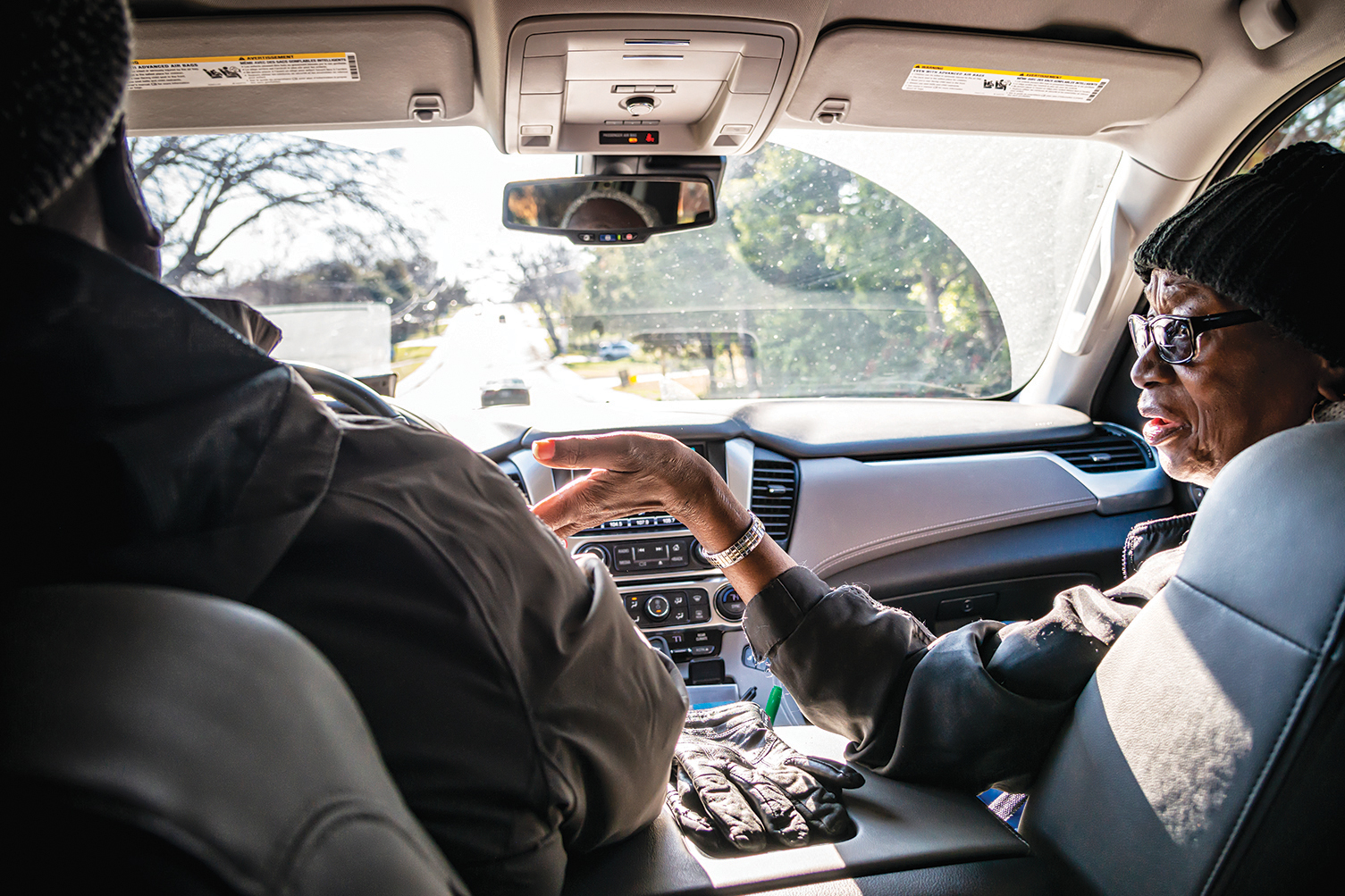
Rogers, Dallas’ director of transportation, praises alternatives like Uber but cautions too much reliance on private companies that may not serve communities equally. “I always like making sure that municipal or county government is involved, and we take equity into that picture,” he says.
City Council member Tennell Atkins represents District 8, which covers the southernmost portion of the city. He fears mediocre transit options could have a cooling effect on development in southern Dallas. “We have jobs in the Inland Port,” Atkins says. “But sometimes because of a lack of transportation, [employees] can’t get to work on time. Then the companies have to retrain another employee, and it may cost $3,500 a year to train another employee.” Companies, he says, will quickly realize it’s more expensive to do business in a neighborhood without transit and relocate elsewhere.
Atkins’ district is home to Red Bird Mall, a formerly bustling shopping center that declared bankruptcy in 2008. Now, with the help of $22 million from the City of Dallas, it’s getting new life as a mixed-use development with office space, retail stores, and apartments. Peter Brodsky, the investor behind Red Bird Mall’s redevelopment, has said he wanted to provide jobs for those who have to “drive too far to Frisco or west on I-20 to Grand Prairie and Arlington to work.”
But by transit, southern Dallas residents located just a few miles up the road from Red Bird Mall must still take a trip that requires at least two bus lines and 40 minutes of travel. From Fair Park, the 12-mile trip would take nearly 90 minutes, requiring either two rail lines and one bus line, two bus lines and one rail line, or three bus lines.
It is, at least, faster than walking.
This story is the from our special issue on housing. This issue also marks the start of our new housing beat.
